Boise’s Urban Renewal Districts
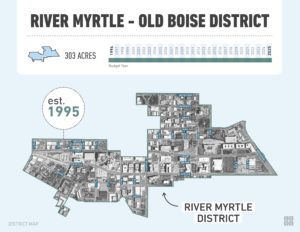
The River-Myrtle Old Boise (RMOB) District consisted of mostly vacant property, warehouses, and remnants of older industrial uses when it was first established in 1996. The formation of the RMOB District was a community-directed effort to assure that downtown Boise remains the foremost urban center in the region for business, government, culture, education, and urban living. The district’s plan set-forth a vision for the area that maintained the urban vitality of the downtown core, while extending it into the larger downtown area and created a place that is attractive to fundamental industries, cutting edge companies, and the workforce they employ.
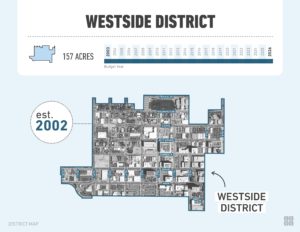
The Westside District aims to reinvigorate the nearly 50 blocks immediately west of the downtown core and help shape a healthy, thriving urban neighborhood with a strong sense of place. City leaders and community members created a shared vision for the area in the district’s masterplan that called for more housing choices, walkable urban neighborhood streets, and a rich mix of uses where people live, work, visit, and enjoy being part of the city center.
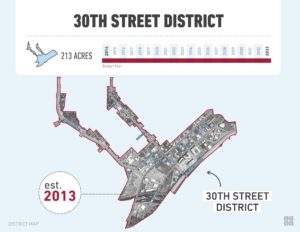
The 30th Street district was envisioned as a premier urban place celebrating its unique location between the Boise River Corridor and downtown. Once home to many auto-oriented businesses including several car dealerships, large parcels of land were vacated when a new direct east-west route from downtown, the I-184 Connector, was opened in 1992. The reduced traffic affected the area’s commercial prospects and large tracts of empty commercial lots are still vacant today. With a focus on the surrounding neighborhoods, the 30th Street master plan seeks to enhance the area to allow for revitalization that broadens the range of housing, employment, neighborhood-oriented services and amenities, transportation options, and arts and culture in the area while honoring and strengthening the existing character of the neighborhoods.
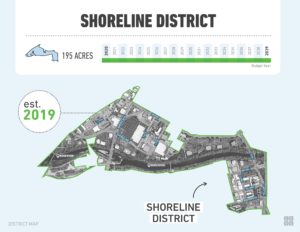
As one of CCDC’s newest districts, Shoreline is a diverse, mixed-use area tied together by the Greenbelt and Boise River. The district has abundant recreational resources with opportunities to increase connectivity and allow for safe, complete access to the natural amenities. The objectives and desired outcomes for the Shoreline District were guided by community conversations, on-site tours and observations, existing community planning documents, and on-going efforts from stakeholders and partners. A desired vision for the area seeks to solve public infrastructure deficiencies in the Lusk Street neighborhood, revitalize the riverfront neighborhood, and enhance the District’s many amenities.
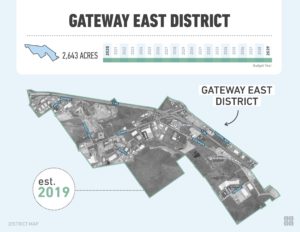
Gateway East is a largely undeveloped part of Boise that, due to its location and zoning, is a prime area. A first of its kind, the Gateway East urban renewal district holds opportunity to solve public infrastructure deficiencies in the area southeast of the Boise Airport, revitalize the Eisenman Road corridor and enhance opportunities for economic and industrial development in the district. City leaders and community members shared a vision for the area that seeks to diversify Boise’s economy, create quality jobs, and plan for industrial growth by improving infrastructure and promoting industrial development in and around Boise’s Airport Planning Area.
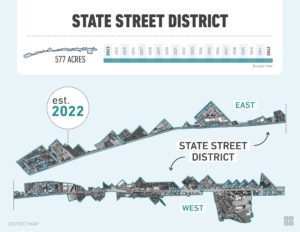
The State Street District holds the opportunity for CCDC to assist with redevelopment of the State Street corridor from an auto-dominated commercial corridor into a series of walkable, mixed-use activity centers supportive of high-quality transit service between Eagle and Downtown Boise. This assistance could include utility upgrades, construction of civic amenities—such as parks, pathways, and public art—and enhancing economic opportunities for businesses and residents along State Street. The City of Boise determined the study area eligible for urban renewal assistance and directed Capital City Development Corporation, Boise’s redevelopment agency, to proceed with the State Street District formation process by Resolution 228-19 on June 4, 2019.
